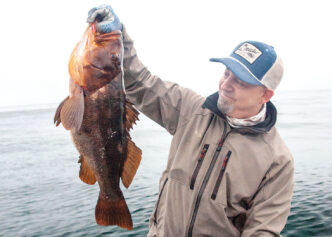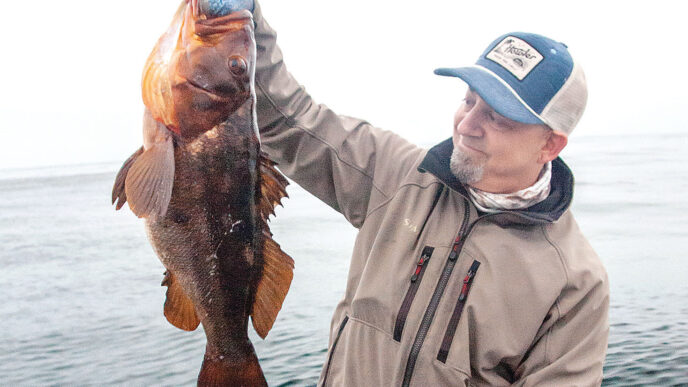For someone who has drunk as much wine as I have, it’s amazing how woefully ignorant I am regarding how it tastes. Any oenologist perusing my wine collection (likely the last four-pack brought home from Save Mart) would probably reel at my selection. I don’t care if he or she thinks the wine is “good” or not. If I like it and it’s affordable, it goes in the cart.
Liking wine is not the same as savoring it. Sharing a bottle of wine with someone who savors it can either be an eye-rolling experience or transformative. When asked to describe the wine in my glass, I’ll swirl the liquid around, sniff deeply, take a taste, think real hard, and come up with something clever and original, like, “Beats a poke in the eye with a sharp stick.”
When the person on the other side of bottle swirls, sniffs, and tastes, my BS meter instinctively starts to twitch. If they raise their little finger and tilt their head back with eyes closed, it’s time to sneak another glass before they return to reality and hold court. However, when that person asks if I can taste the subtle hint of peaches, perhaps a trace of green apples, or freshly cut grass, I freeze in my tracks and think to myself, “Actually, yes, I can.” As if a veil was lifted, that mouthful of wine has transformed from being just another swig into something complex and wonderful. Those subtle flavors didn’t just suddenly jump into my mouth. They were there all along, but I was simply unable to them perceive them. I needed an introduction.
A TED Talk presenter once gave a lecture about color perception and the possibility that we don’t recognize colors until introduced to them. RadioLab produced a podcast on the subject, and in short order, the digital publication Tech Insider posted a YouTube video that summarized the basic points of the lecture. The premise is based on the claim that humans didn’t “see” the color blue until only a few thousand years ago. Ancient texts, including the original Bible, describe many colors, but never blue. Homer described the oceans and seas as the color of dark wine. Language historian Lazarus Geiger discovered that in languages such as Chinese, Greek, Hebrew, and Japanese, the word “blue” was the last color to be described. After black and white, the first color to appear in their texts was red, then yellow, then green. There was a long gap until blue was finally described by the Egyptians. They developed a blue dye, described it, and from there the word for blue apparently spread across the globe.
A psychologist from Goldsmiths University in London, Jules Davidoff, thumbed through the world’s languages and found that a language unique to a tribe in Namibia lacked a word for blue. He visited the Himba tribe and showed them a dozen squares. Eleven of the squares were emerald green and the twelfth was (to my eyes at least) as distinctly blue as a robin’s egg. Most of the tribe could identify the blue square only after intense effort, and even then, many were never able see the difference. To the Himba, all of the squares were green. Davidoff then showed them a dozen squares where eleven were emerald green and one was a fractional shade lighter. (I couldn’t tell which one was different until it was pointed out.) The Himba, who have many different words for green, pointed out the lighter shade of green in a f lat instant. Davidoff (and others) have concluded that until a description for something has been put into words, that “something“ doesn’t register with our senses. Once told that my wine contained the flavors of peaches and cut grass, I’ve never missed it again. With lots of training (and concomitant drinking), I could possibly become a wine snob, just as I might be considered a color snob should I visit the Himba.
For a much more detailed look into the world of colors that we see, but don’t recognize (and counterpoints to Davidoff ’s theory), I urge you to listen to the RadioLab podcast “Colors.” It is over twenty thousand words long, compared with the fourteen hundred words I have to work with. It’s fascinating, and I can’t recommend it enough.
Without looking up from this page, tell me what time it is. (Speak quietly, or they’ll think something’s up.) If you are like most people, you consciously framed the question, “What time is it?” in your brain. Only after queuing the question in your mind will the right portions of your brain come together to form an answer, and the irrelevant voices in your brain will be ignored. With your question, the brain has been formally introduced to the time-sensing mode. Even in the middle of the night, without external cues, you’ll probably come pretty close to guessing the right time. When asked to point north, most of us can do it without a conscious effort.
We exist on the edge of many types of perception. Can we train ourselves to heighten our sensory perception? For example, can we train our eyes to see invisible fish? The answer is an unequivocal yes.
Before casting, before fly selection, before tying good knots, before anything else, if I were to direct the budding novice how to be a strong all-around angler, it would be a lesson in spotting fish. Ironically, trout and bass anglers are usually pretty lame when it comes to seeing fish.
Trout and bass predictably hold in easy-to-recognize water types and easy-to-spot kinds of structure, and trout, in particular, show themselves by rising. You don’t necessarily have to see trout to catch them, but if you want to catch more of them on a routine basis, head to the nearest carp pond.
Carp are called the poor man’s bonefish for a good reason. It is a sight-and-stalk game. Delicate, accurate presentations are a must, and frequently so are long shots to moving targets that act more like ghosts than fish. When you get to carp water, tell yourself (even out loud) to look for anything unusual. When your mind starts to wander, deliberately reintroduce it to carp mode.
Carp are a dull bronze color, which hides them remarkably well in the stained or muddy water in which they live and above the silted bottoms over which they swim. Glare from the sun and clouds and even a light, wind-driven ripple across the surface of a carp pond is enough to hide them almost completely. I say “almost,” because in even the worst conditions, a good carper will sense their location.
Carp push water as they move, and a slightly incongruous ripple of water will precede them. The ripple might be only millimeters tall, but it will be moving with a shape and in a direction different from everything else around. Even when carp are simply hovering in thin water, the pond’s own ripples will steepen or part as they cross the sudden shallowness of the carp’s back. Once the clue has been provided as to the carp’s location, the carp itself will become visible: maybe a smudge of dark moving from left to right, or the dull flash as it rolls on a damselfly nymph, or even a puff of mud as it roots for clams. With time and persistence, you will enhance your ability to see invisible fish.
For the ultimate crash course in seeing invisible fish, hitch a ride with a guide on the flats. It is not only a whole lot of fun, but flats fishing will make you a much better trout angler. The guide will point to blank spots on the water and say something like, “Two permit, 30 feet, three o’clock, moving straight away!” Of course you’ll think he’s pulling your leg and saving face to make up for the fact that he has taken you to vacant water, but over time your vision will evolve, and you’ll start to see what he sees. After a week on the flats, a trip to your local trout stream will be like visiting the Monterey Bay Aquarium. There is no quicker way to become a better trout fisher than to have your vision corrected by a guide in a flats boat.
















